
Demonstrated efficacy of RotaTeq® (Rotavirus Vaccine, Live, Oral, Pentavalent)
RotaTeq helps to protect patients against RGE
In clinical trial (REST – Study 006), RotaTeq helped protect against RGE caused by G1, G2, G3, and G4.
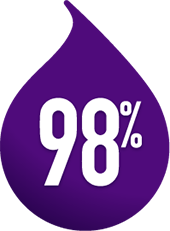
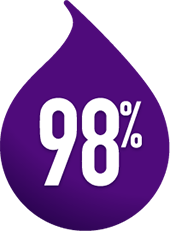
efficacy against severe RGE through season 1 postvaccination (N=5,673: 2,834 vaccine; 2839 placebo)a-c
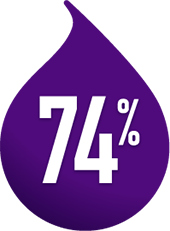
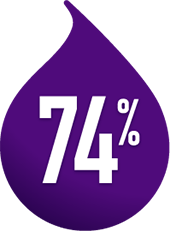
efficacy against RGE of any severity through season 1 postvaccination (N=5,673: 2,834 vaccine; 2,839 placebo)a
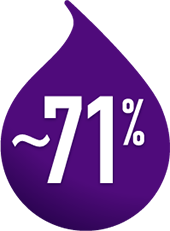
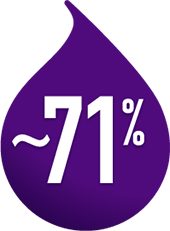
efficacy against RGE of any severity through season 2 postvaccinationa
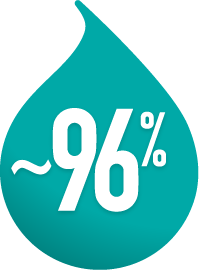
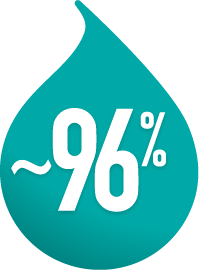
reduction in rotavirus-associated hospitalizations through season 2 postvaccination (N=68,038: 34,035 vaccine; 34,003 placebo)a
In a post-hoc analysis of REST, RotaTeq also helped protect against RGE caused by G9.
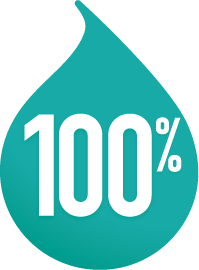

reduction in rotavirus-associated hospitalizations or ED visits caused by G9 in a post hoc analysis of health care utilization data. (N=68,038: 34,035 vaccine; 34,003 placebo)a
Study design
REST (Study 006) was a double-blind, placebo-controlled, randomized, multinational trial from 2001 to 2004. Healthy infants 6 to 12 weeks of age were randomized to receive 3 oral doses of RotaTeq or placebo at 4- to 10-week intervals. The primary end point was safety with regard to intussusception (N=68,038), with nested safety (N=9,605) and clinical efficacy (N=5,673: RotaTeq n=2,834, placebo n=2839) substudies.1
In clinical trial (Study 029)
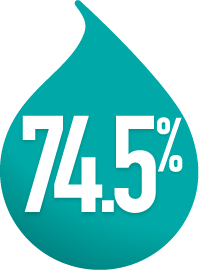
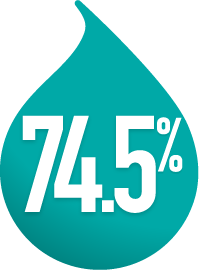
efficacy against RGE of any severity caused by G1, G2, G3, G4, and G-serotypes associated with type P1A[8] (eg, G9) (N=761: RotaTeq n=380, placebo n=381)
Study design
Study 029 was a multicenter, randomized, double-blind, placebo-controlled, parallel-group trial conducted in Japan. Healthy infants 6 to 12 weeks of age were randomized to receive 3 doses of RotaTeq or placebo at 4- to 10-week intervals with the third dose given by 32 weeks of age. The primary end point was efficacy against RGE caused by rotavirus types present in the vaccine (ie, G1, G2, G3, G4, and G-serotypes associated with P1A[8] [eg, G9]), occurring at least 14 days post dose 3.2
aPer protocol analysis
bEfficacy end point applies to season 1.
cSevere gastroenteritis defined by a clinical scoring system based on intensity and duration of symptoms of fever, vomiting, diarrhea, and behavioral changes.
ED, emergency department; RGE, rotavirus gastroenteritis.


Helping to protect against RGE since 2006


Looking to stock RotaTeq in your practice?
Simply register or log in to your account to get started.

CDC recommendations
Find out about the CDC recommendations for rotavirus vaccination in pediatric patients.3

Rotavirus strain coverage
RotaTeq has broad coverage, indicated to help protect against RGE caused by five strains, including G2.
References
- Vesikari T, Matson DO, Dennehy P, et al; Rotavirus Efficacy and Safety Trial (REST) study team. Safety and efficacy of a pentavalent human-bovine (WC3) reassortant rotavirus vaccine. N Engl J Med. 2006;354(7):23-33. doi:10.1056/NEJMoa052664
- Iwata S, Nakata S, Ukae S, et al. Efficacy and safety of pentavalent rotavirus vaccine in Japan: a randomized, double-blind, placebo-controlled, multicenter trial. Hum Vaccin Immunother. 2013;9(8):1626-1633. doi:10.4161/hv.24846
- Advisory Committee on Immunization Practices (ACIP). Recommended child and adolescent immunization schedule for ages 18 years or younger, United States, 2025. Last reviewed October 7, 2025. Accessed October 27, 2025. https://www.cdc.gov/vaccines/hcp/imz-schedules/downloads/child/0-18yrs-child-combined-schedule.pdf
